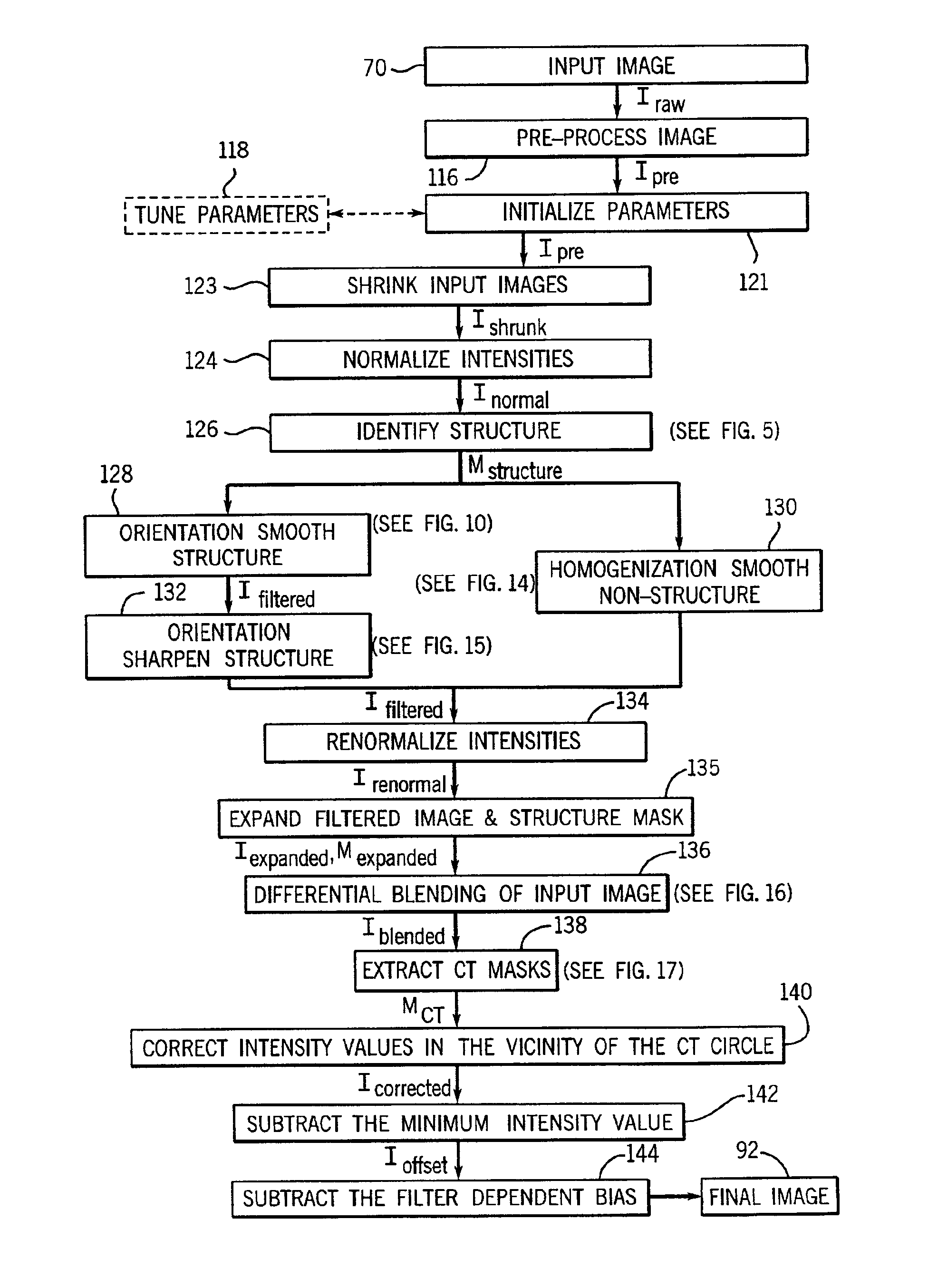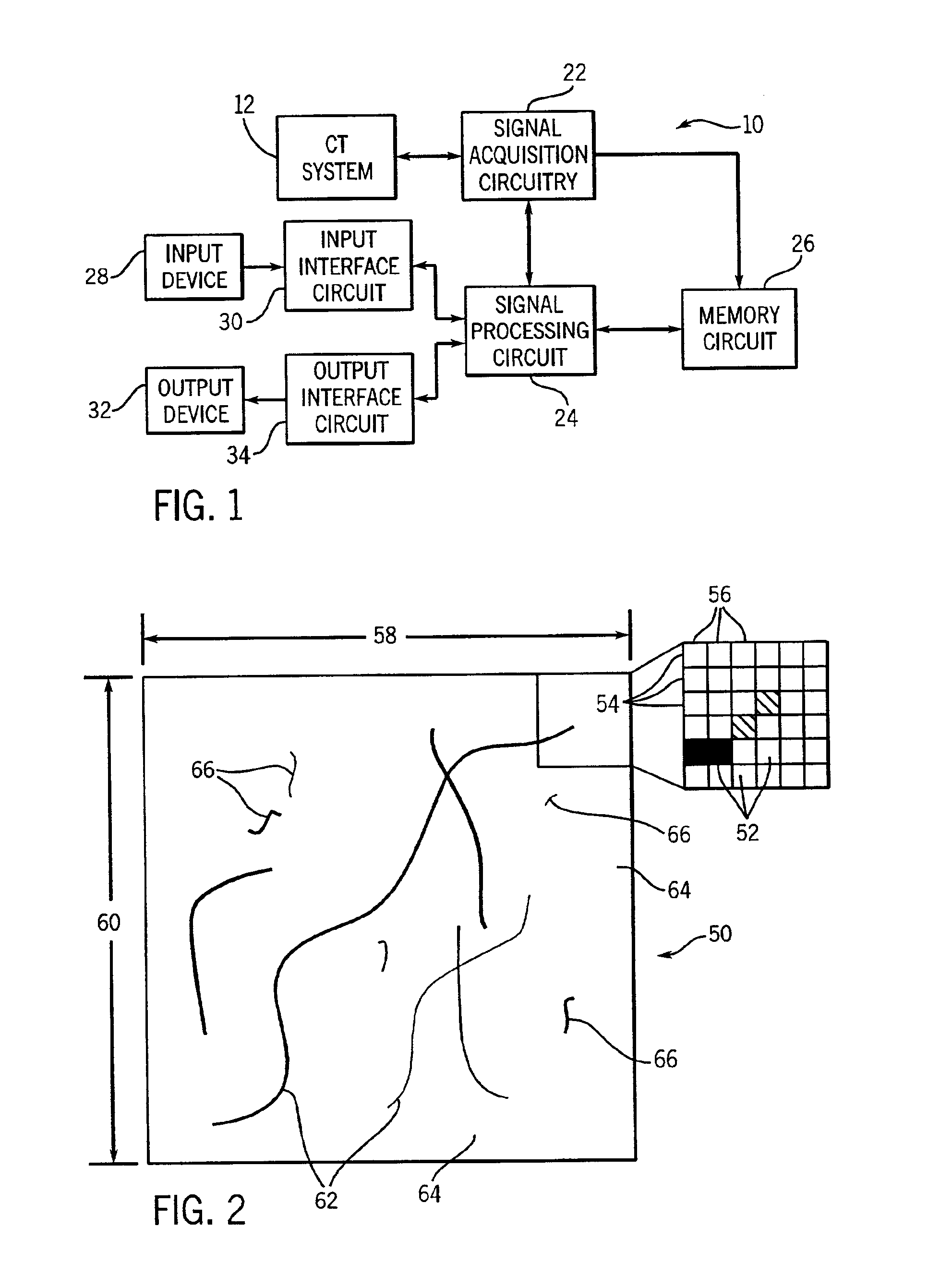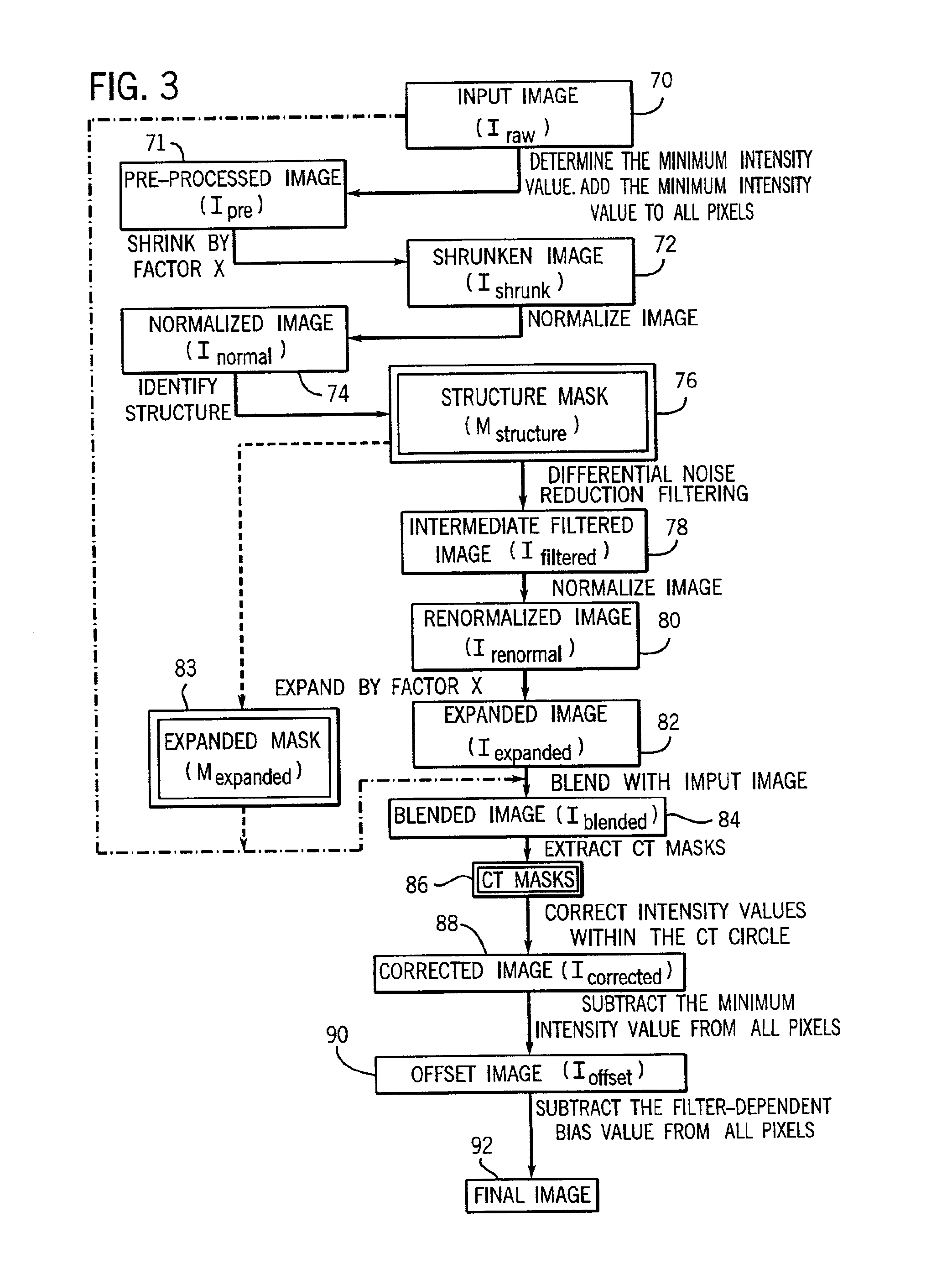CT dose reduction filter with a computationally efficient implementation
a pixel image and dose reduction technology, applied in image enhancement, image analysis, visual presentation, etc., can solve the problems of difficult to determine which of these parameters, or which combination of parameters, may be adjusted to provide optimal image presentation, and the known signal processing system for enhancing discrete pixel images suffers from certain drawbacks, so as to increase computational efficiency, reduce image quality, and maintain image quality
- Summary
- Abstract
- Description
- Claims
- Application Information
AI Technical Summary
Benefits of technology
Problems solved by technology
Method used
Image
Examples
Embodiment Construction
[0037]A highly abstracted rendition of image processing by the present technique is illustrated in FIG. 3, beginning with the input of the raw signal data as input image 70. Input image 70 is initially processed to calculate a minimum intensity value. This constant is algebraically added to all the pixel intensity values in the initial image data to make the image intensity positive. The result of this pre-processing step is pre-processed image 71.
[0038]Pre-processed image 71 is shrunk by a user configurable parameter, X, to create shrunken image 72. Shrunken image 72 undergoes normalization to create normalized image 74. Threshold criteria are applied to identify structures within normalized image 74. The structures identified are used to generate a structure mask 76 which is used in subsequent processing to distinguish both structure and non-structure regions, allowing differential processing of these regions. Normalized image 74 is filtered to reduce noise via structure mask 76 t...
PUM
 Login to View More
Login to View More Abstract
Description
Claims
Application Information
 Login to View More
Login to View More - R&D
- Intellectual Property
- Life Sciences
- Materials
- Tech Scout
- Unparalleled Data Quality
- Higher Quality Content
- 60% Fewer Hallucinations
Browse by: Latest US Patents, China's latest patents, Technical Efficacy Thesaurus, Application Domain, Technology Topic, Popular Technical Reports.
© 2025 PatSnap. All rights reserved.Legal|Privacy policy|Modern Slavery Act Transparency Statement|Sitemap|About US| Contact US: help@patsnap.com



